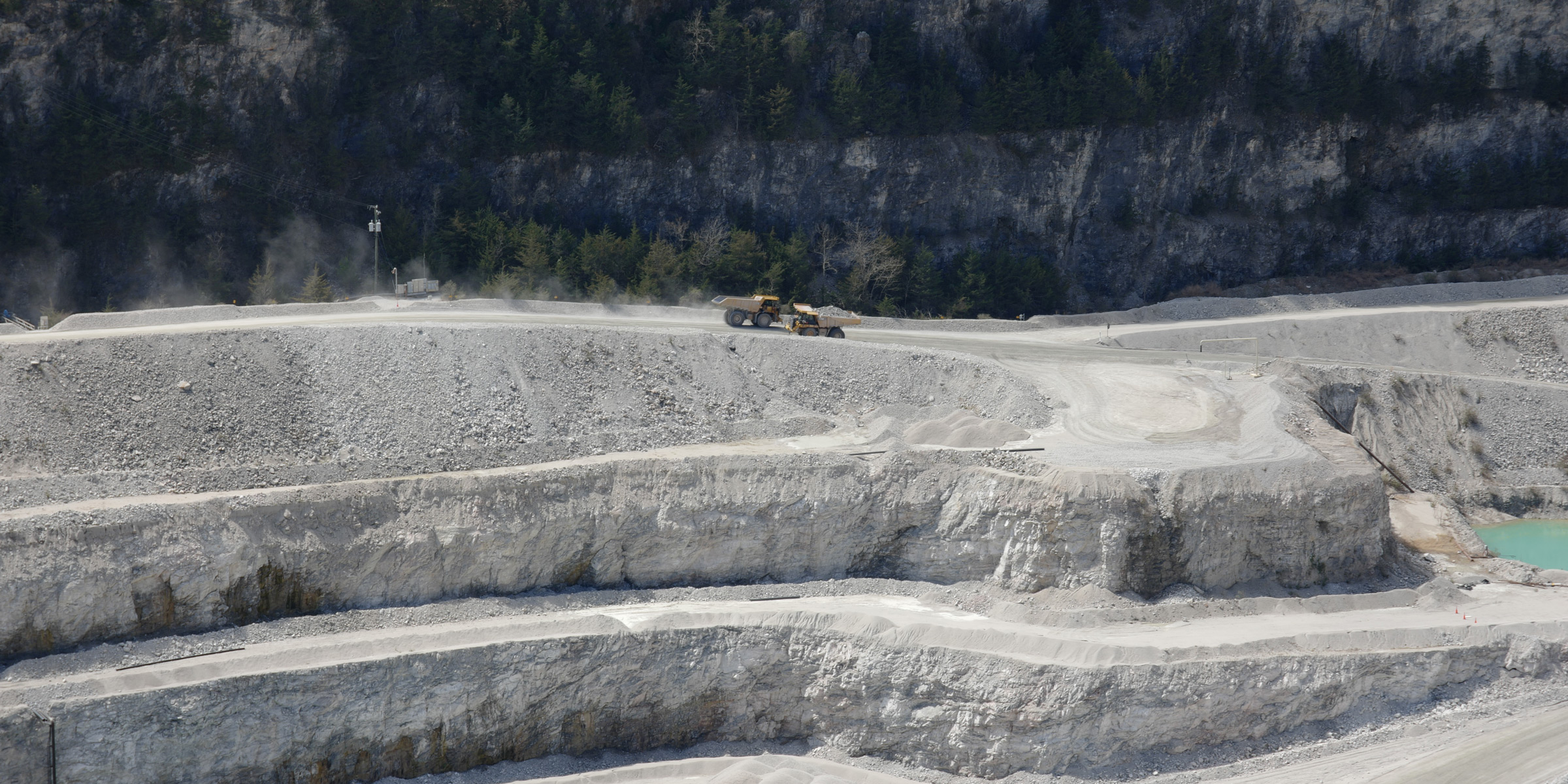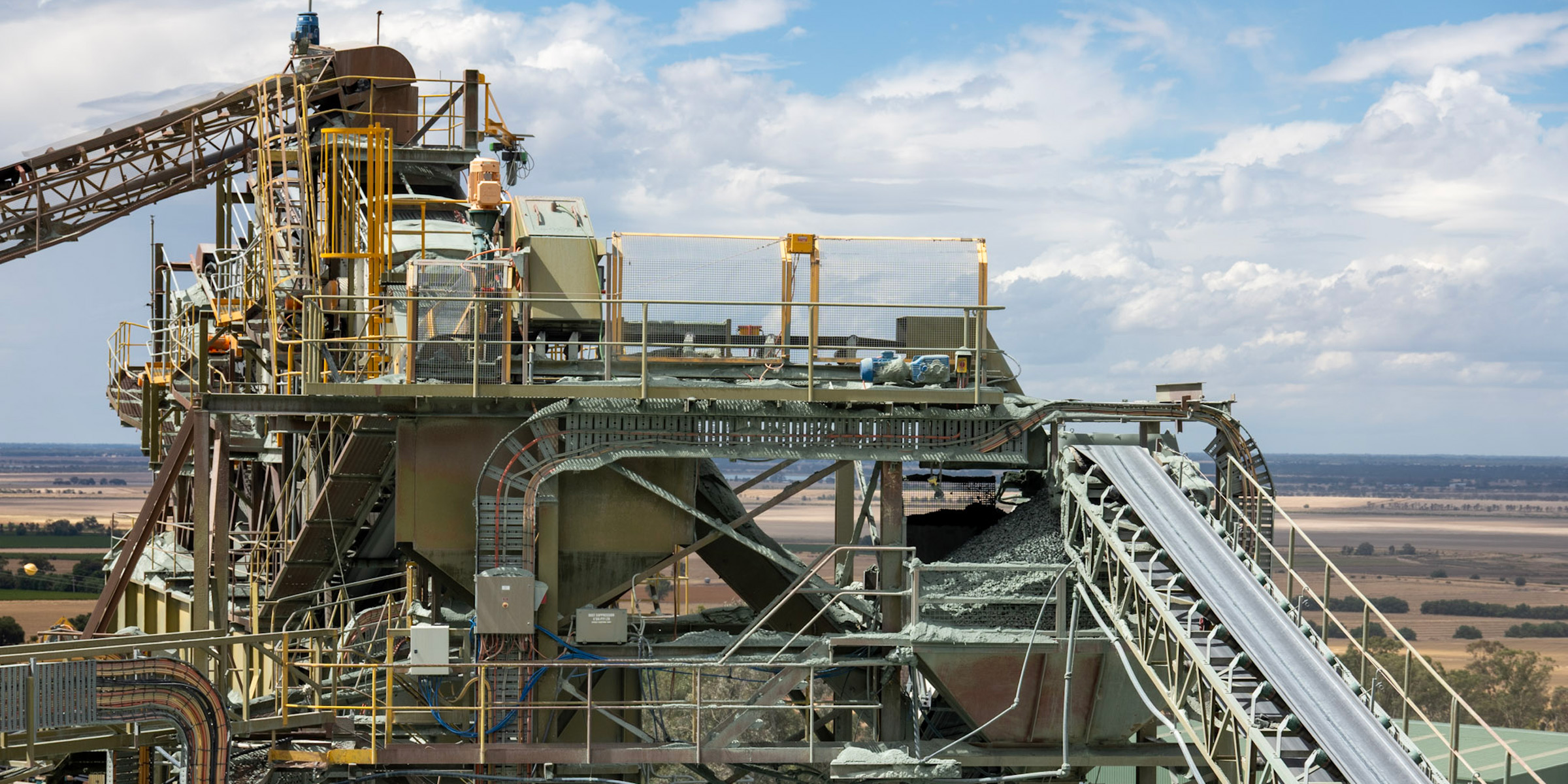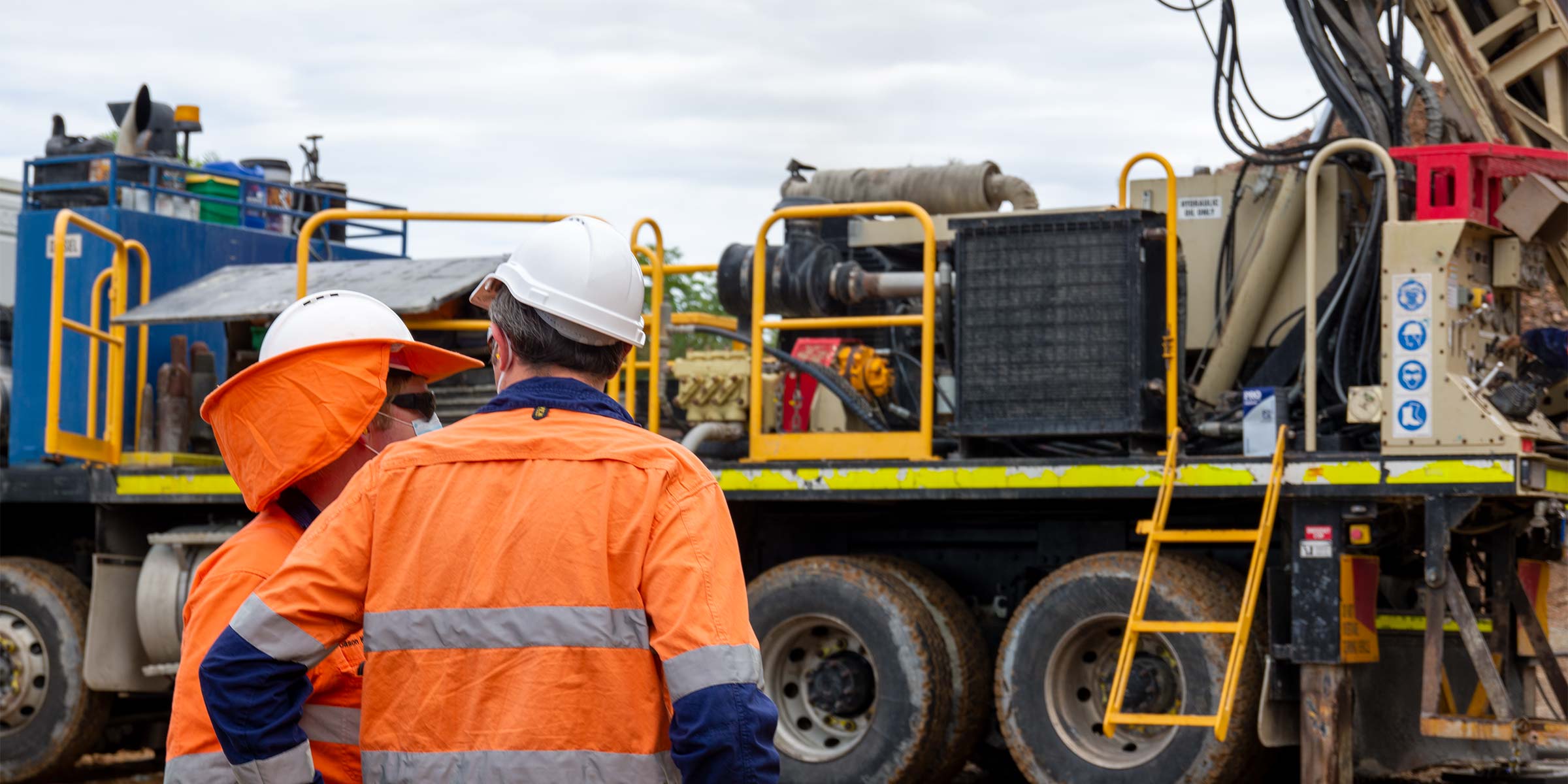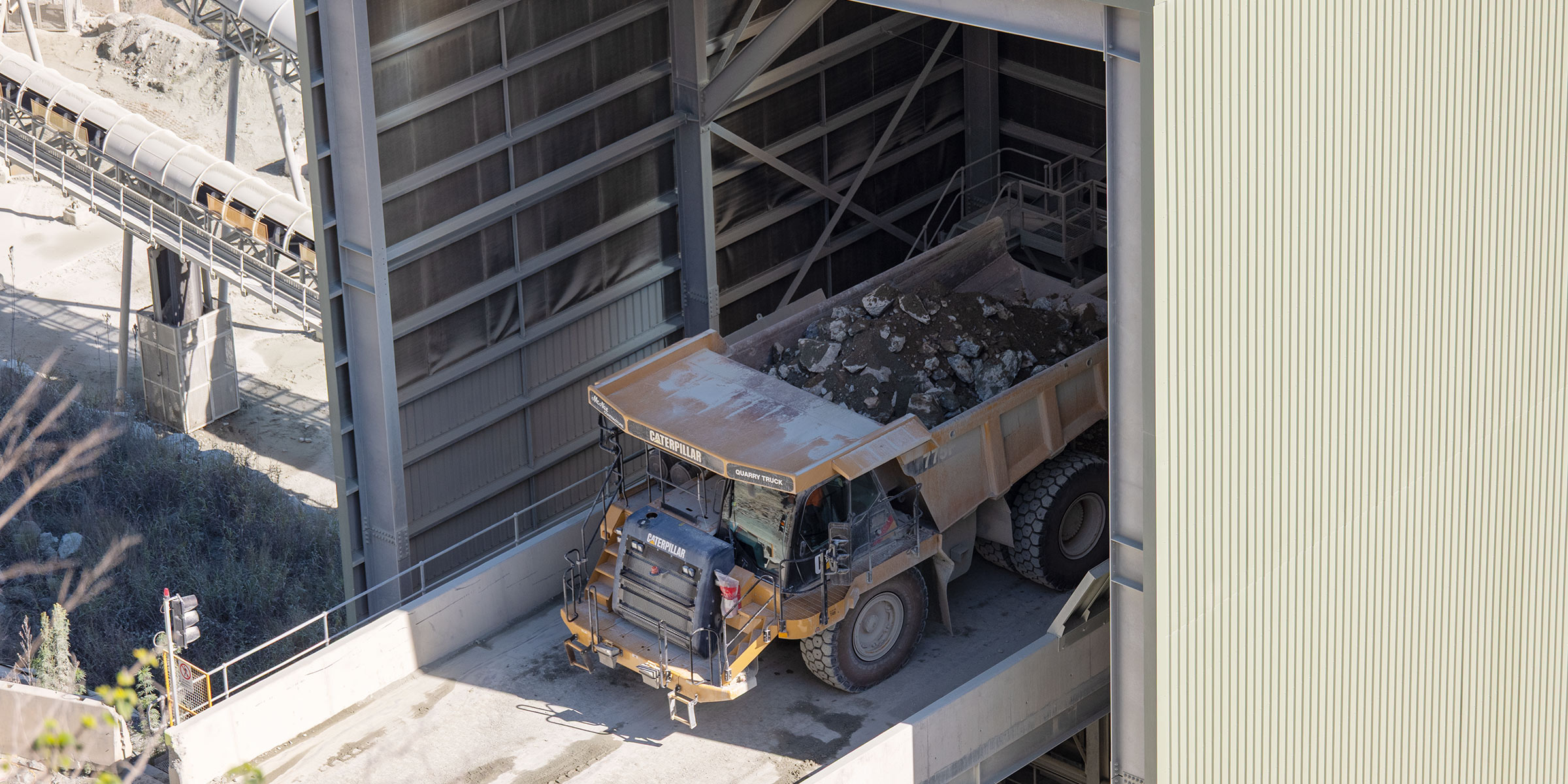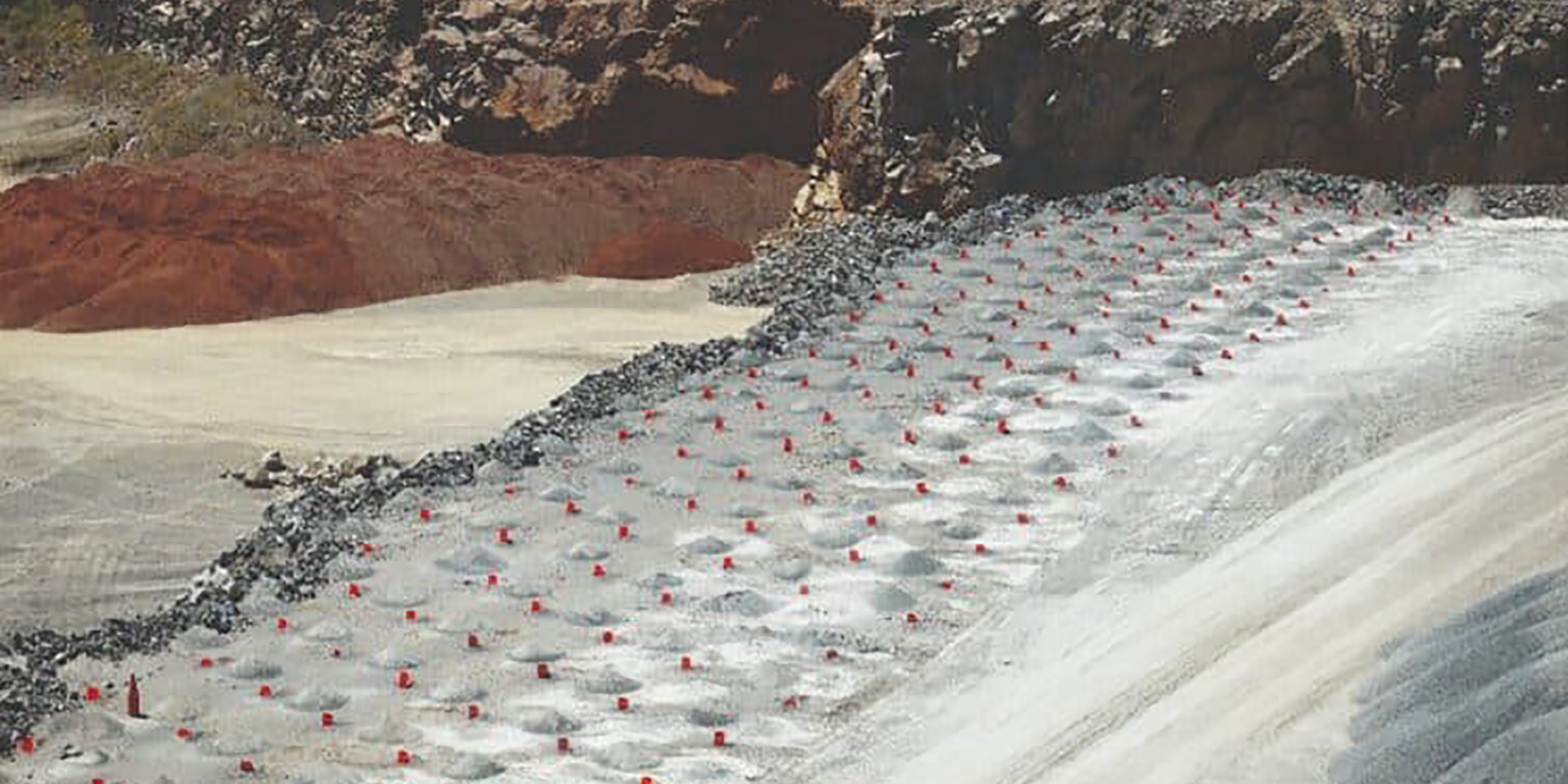
What does good drill and blast look like?
Eltirus founder Steve Franklin recently visited Strayos founder, Ravi Sahu to help understand why Strayos has 80 per cent of the North American drill and blast software market to find out why it has made such an impact.
Good drill and blast practices can make a big difference to quarry operations, but what does good look like?
SURVEY
The most important starting point is an accurate topography of the area to be blasted. Ensuring that you have an accurate idea of the face is critical to ensure that the front row holes can be correctly positioned to minimise oversize and the likelihood of a face burst and fly rock.
Traditionally, the face has been “scanned” by simple laser scanning devices, but drones are increasingly being used to obtain this data.
Current generation drones, flown in terrain following mode with the camera at an oblique angle can provide the photographs needed by software such as Strayos to provide an accurate topography for blast design.
Blast design
The first step in any design activity is to locate the blast spatially within the pit. There should be an engineering design for the bench showing where the crest and toes of each bench are the ramp design for that bench.
With this as a starting point, it is easy (using good software) to ensure that the proposed blast is not going to inadvertently take out a ramp or result in the loss of a berm.
It also ensures there is a clear idea of what the design relative level (RL) of the floor is.
In general, a blast should be of sufficient size as to take a full truckload of explosives (or a multiple thereof) to reduce costs and minimise the amount of oversize generated from the front row consistent with environmental constraints such as blast over pressure or vibration.
With an accurate blast area topography and correct spatial positioning, the blast designer can now go about the task of designing the blast, with a particular focus on getting the front row hole positions exactly right to ensure the correct face burden (the distance between the explosive column and the open face).
Care should be taken to ensure that the blast is designed for the type of loading tool that will be used to dig it. For example, if you are going to dig the blast with a wheel loader, you would generally design the muck pile to be flatter and thrown further than if it was for an excavator.
Strayos allows quarries to predict what the blasting results will be before they fire the shot, including muck pile profile, fragmentation, vibration, so that the design can be modified pre-blast.
Drilling
Once the design process is completed, the next step is to get the pattern into the field. In the past, this was done by painting rocks on the bench, more commonly now through uploading the design to a GPS guided drill rig hole navigation system, HNS, that enables the operator to visualise each drill hole collar location and drill the hole in the correct place, at the correct angle and to the correct depth.
It can’t be stressed just how important it is that the hole is drilled in the correct location and to the correct depth – checks to ensure that actual drilling results are in line with planned drilling is critical to the process.
Rigs fitted with hole navigation system not only help ensure that this is the case, they also help the operator when they find themselves in a situation where it is impossible to drill the collar in the planned position. For example, if the operator is unable to get a face hole collar in the correct position due to say the windrow on the face, the rig navigation system can generally reconfigure the angle and drilling depth to reflect a different collar position.
Once drilling is complete, the front row (at least) should be bore-tracked to determine any deviation in hole path that may require the charging of the hole to be varied to prevent a face burst.
Strayos is able to display not only the bore-tracking data for 3D representation but also has the capability to take a post drilling drone flight and use this to match actual collar position against design collar position.
Rigs equipped with hole navigation systems are generally also fitted with systems to log the drilling conditions, either as a simple drillers log or sophisticated measure while drilling systems that can record rotation speed, drilling pressure, air pressure and more.
Measure while drilling data is increasingly being used to inform blast design (modification of hole loading weight), identification of geological structures and the like and will have an increasingly wide range of uses as it becomes easier to visualise and interpret.
Strayos provides a simple way to visualise measure while drilling data from a range of rig systems, thereby ensuring that all the data is in one place and spatially relevant.

Measure while drilling data is increasingly valuable. Image: Eltirus
Blasting
Checking that the drill holes are in the correct location, at the correct angle and to the correct depth is a critical starting point in the blasting process.
Quality systems should be in place to check that actual matches design and to require the remedy of holes that don’t meet specification. For example, ensuring that if a hole has fallen back in and lost depth, that this is remedied wherever possible before it is charged.
There should be a loading plan that shows each hole and how much explosive is planned to go into each hole and systems in place to ensure that if the charge weight is significantly different to plan that loading is stopped and the problem investigated before firing.
In general, the best blasting results these days result from the use of electronic detonators. Blasts fired with electronics generally have better environmental performance and fragmentation as a result of the reduction in timing scatter. This said, they are also more expensive and good results can also be obtained from firing with non-electronic methods.
Good drill and blast results are the result of a lot of quality assurance and care for the fundamentals.
Excavation
Once you have a good blast, the next step is to dig it out correctly. I mentioned earlier how important it was to design the blast to a specific floor RL. Simply throwing a tape over the face to get the height of the last blast and then drilling to that is poor practice, as is guessing what depth to dig the blast out to is.
In almost all instances I have investigated where the loading tool operators were complaining about poor drill and blast outcomes resulting in them digging toe, I found that the reality was that the operator was digging below the design floor level.
It is imperative that you ensure that your loading tool operators know what level to dig to. The best way to do this is to fit 3D machine guidance systems that show the operator what level to dig to. You can also regularly provide the operators with level indications through the use of laser levels or GPS rovers.
One of the poor operational outcomes that generally results from digging out the subdrill zone is the practice of bringing dust back onto the bench to level up the floor.
Having to then collar and drill through this dust on the next bench is time consuming and difficult (not to mention unnecessary). Conversely, where operators leave material above the design floor level, you have a similar problem – broken material, which equals slower drilling (and more likelihood of fall back into the hole).
Whether it be drilling through dust or drilling through material left on the bench, the outcome is the same – slower drilling and you get to pay twice to blast the same material.

The relationship between toe and design floor level. Image: Eltirus
Continuous improvement
The best processes are those where you tightly control the variables and then compare actual performance to predicted performance. Strayos has some great tools to help you compare actual fragmentation with predicted and then use the actual data to modify future designs.
One of the tools that Eltirus is most excited for is the Netra device which can determine the fragmentation of a truck load of material as it is tipped into the primary crusher hopper to give real time analysis.
Summary
One of the best benefits we have seen with Strayos is the fact that you have a full drill and blast design package within a drone platform – everything is in one place, making it easier to reconcile actual performance with predicted and improve your drill and blast practices.
Eltirus has a demonstration Netra fragmentation analysis system available for trial.
This article originally published on the Quarry Magazine website – click here to view the full original article.
To find out more, contact Steve Franklin on +61 474 183 939 or [email protected]


